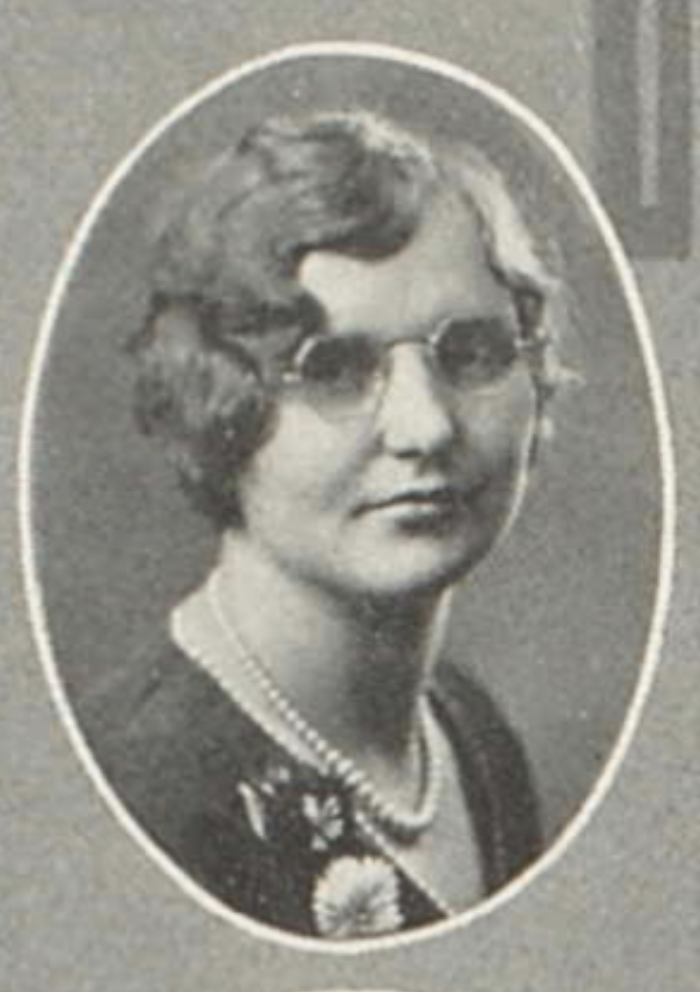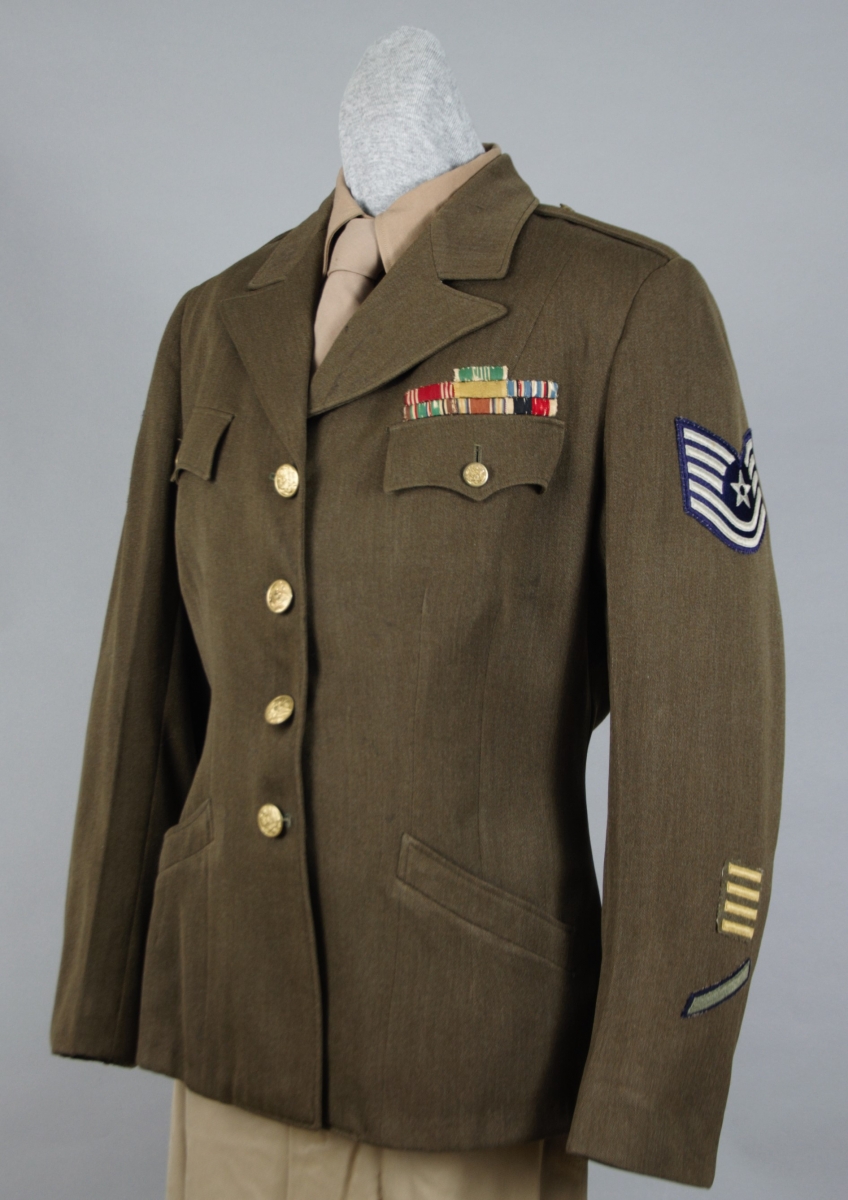New WWII Women's Army Corps Uniform on Display
It is a standard practice within museums to swap out artifacts periodically, particularly ones that are more susceptible to degradation, like textiles. The exhibition Detroit: The “Arsenal of Democracy” at the Detroit Historical Museum contains a display that showcases a military uniform, and the story behind it. Rotating the uniform in this space allows us to reduce potential wear on the artifact and grants us the opportunity to tell new stories.
The naval uniform of Clark Louis Humrich is ready to go back into storage. The next uniform in the spotlight belonged to Master Sergeant Ellen S. Heliste of the Women’s Army Corps (WAC), and later the Women in the Air Force (WAF) program.
Ellen Heliste

Ellen Helistein the 1931 Luther L. Wright High School, Ironwood, Michigan yearbook. She taught English, Math, and Social Studies.
Born in 1905, Ellen Sophie Heliste was a high school teacher in Michigan’s Upper Peninsula in the years before World War II. She enlisted in the WACs in Detroit in 1943. Her uniform reveals that she spent at least a year and a half overseas as part of the European-African-Middle Eastern Campaign. Heliste served through the end of the war and stayed in the service, joining the Women in the Air Force (WAF) program at its inception in 1948, eventually attaining the rank of Master Sergeant. Despite being a division of the U.S. Air Force, WAF recruits were not trained as pilots.
The uniform on display is from the WACs but it was modified when she joined the WAFs, before they had instituted their own uniforms, as evidenced by the Air Force Technical Sergeant chevrons on the left sleeve. When the uniform was donated to the Detroit Historical Society in 1958, Heliste was still in the service, and she remained so until 1963. It wasn’t until 1976 when women were fully integrated into the U.S. Air Force, and the WAF program was disbanded. Master Sergeant Heliste passed away on November 11, 1978 and is buried at Arlington National Cemetery.
Women Waging War

Facts You Want To Know About The WAC booklet, 1943
Over 200,000 Detroit men and women went on to serve in the armed forces during World War II. Women were assigned to segregated units through different branches called WACs (Army), WAVES (Navy), SPARs (Coast Guard), WASPs (Army Air Force),and Nurse Corps (Army). Their aim was to designate women to duties that would allow for more men to be available for armed warfare. They performed many roles, like radio operators, mechanics, clerks, photographers, cartographers, public relations personnel, typists – nearly any role except for combat. While most served on the home front, many also served close to battle overseas.
Telling a Story

The awards and insignia on Heliste’s uniform reveal details about her service
The awards and insignia on this uniform give us details about Master Sergeant Heliste’s duty during World War II and beyond. Starting at the left sleeve cuff, the single green stripe indicates she enlisted for a period of three years. Above that, the three gold bars indicate one six-month deployment overseas each, for a total of one and a half years. Positioned near the shoulder are her Air Force Technical Sergeant chevrons, which were likely used on this uniform before receiving a proper WAF uniform.
The awards on the left chest are:
Top: Army Commendation Medal
Middle: Army Good Conduct Medal, WAC Service Medal, American Campaign Medal
Bottom: European-African-Middle Eastern Campaign Medal, WWII Victory Medal, Army of Occupation Medal
See it at the museum
Visit Detroit: the “Arsenal of Democracy” at the Detroit Historical Museum to see this uniform in person, and learn more about the role of Detroit and Detroiters in World War II.

